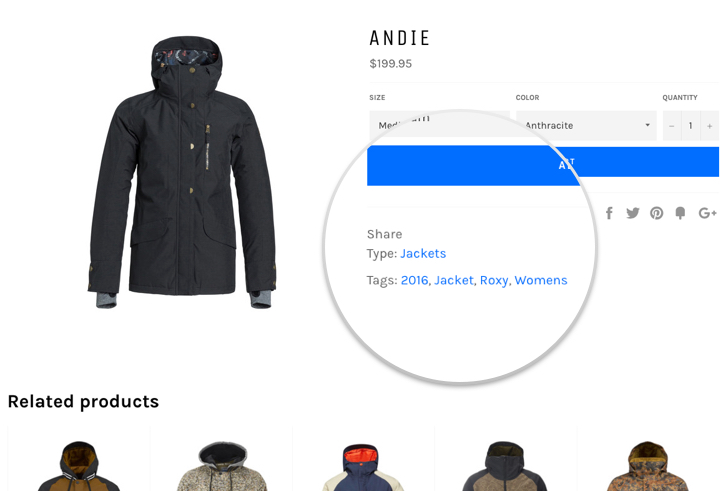8 Shopify SEO Tips to Master Traffic Growth [Fast]

Can there ever be too many Shopify SEO tips?
Actually, we think there can…because, you know what? Too much of anything seems to cause a temporary blindness in people. They switch off, close their eyes, put their hands over their ears and shout ‘LA LA LA’ at the top of their voice. Not listening!
That applies to Shopify store owners and SEO. That’s why we decided to boil things down a little here.
There are so many Shopify SEO tips out there that some store owners don’t know which way to turn. It can become so complicated that you can’t see the forest for the trees. It’s important that it doesn’t get to this situation because really really SEO matters.
So how do you sort the gold dust out from the coal dust?
We’ve done that for you. Below are a handful of the best Shopify SEO tips. These are the ‘80%’ ones that few businesses can do without; the other 20% of SEO can be extremely difficult and takes considerable time to master, but the 80 percenters everyone needs – and they will improve your rank and your traffic.
Most likely, you are already following a few of them – so you can start applying to your store any that you haven’t taken seriously enough yet. They will bring better results – we’ve seen them work time and time again on our clients’ and students stores.
Shopify SEO Tips: Mastering the art of growing organic traffic

Included in this post are all the areas that you should be focusing on with your Shopify SEO: a range of tips that help you sort out what to keep and what to throw away with what you know about SEO currently.
If you have been successfully running a store for many years, then you should know a great deal of this – but there may still be a few gems you can pick up. If you are just starting out with a Shopify store, then much of this may be applicable for you instantly.
The Shopify platform is very SEO-friendly and there are a variety of built-in SEO features that make it easy to get the basics right. Aim for best-practice SEO strategy; you may make a few mistakes along the way, but aim high and these mistakes will be absorbed by all the things you do right.
So which areas do you need to focus this SEO strategy on, in order to generate the traffic that you’re looking for?
1. Master Shopify Keyword Research

What exactly are your ideal shoppers searching for? Notice the word ‘exactly’ here – what are they typing into Google search?
Learn to be precise with this. Search your main keywords and then consider alternatives and longer tail keyword phrases and LSI keywords (terms that are related to the main ones). Then use these phrases strategically and liberally throughout the pages of your store to rank with the search engines.
This will not only bring more organic traffic- but better quality traffic to your store i.e. people who are actually interested in buying and not those who click through by mistake.
You can use SEO tips like these or these to improve your keyword-targeting skills.
2. Master Shopify On-page SEO

Once you’ve mastered keyword targeting, then it’s time to place those keywords into the copy on your store.
Basically, you need to show Google that you deserve to be in the rankings for a particular keyword phrase that shoppers are searching for, because it’s highly relevant to what’s on your site. So you need to optimize the individual content pages.
This includes not only your text, but also the video and images that you use. It’s all important content that can increase your visibility in the SERPS.
Use this excellent on-page SEO resource to help with optimizing all of your Shopify store pages – including tips on using Shopify product tags for titles and meta descriptions.
3. Master your Shopify sitemap & architecture

Site architecture is critical to Google and the other search engines AND to your users. Like with all worthwhile SEO, do not sacrifice the user experience. Make them work together as one.
Consider Google another customer who wants a clear, uncomplicated, uncluttered way of navigating your site and understanding its content. Google won’t be buying anything but they will deliver you rankings if you get the organization and structure of your site right.
If your site architecture is not optimized, your customers won’t be able to find what they need efficiently – which will impact sales and will certainly affect your traffic. It’s all connected.
This resource on site architecture tells you more.
4. Master Shopify Technical SEO Optimization

You are probably aware that, when indexing your site, search engine web crawlers are on the lookout for certain features.
As well as good general organisation of content in the site architecture (as mentioned above) there are other features of your Shopify store that need to be up to scratch.
Such as?
Well, page load times for one – besides the web crawlers penalising your site, you won’t create many happy customers if your site is slow. Also ensure that your site is mobile-first in terms of usability and make sure that all content is unique and not replicated across multiple pages.
These are probably not elements of SEO that you can look after yourself; get your technical or website people to attend to this though, as it will affect rankings.
Don’t forget apps can help with this process.
If you need a little more information, Quicksprout has an excellent beginners guide to technical SEO.
5. Master Link Building For Shopify

How is your Shopify store’s link profile? In the ‘eyes’ of the search engines, the more quality sites that link to you, the more authoritative you are in your niche. This is an important ranking factor, so it’s worth understanding more about it and spending a little time to master it.
If you just sit back and expect links to come to you, it probably won’t work. You’re not Louis Vuitton or Estee Lauder!
But be wary of ‘black hat’ SEO practices for generating links too, as these can get your site penalized.
Nothing beats a co-ordinated, consistent link-building strategy based on high-quality content and relationship-building. This resource on link-building for SEO will tell you more about how you can improve the link profile of your Shopify store.
6. Master Content Marketing for Shopify

A Shopify store is no different to any other website in that content ultimately matters.
Original, informative, well-written, eye-catching content that is also SEO-friendly ticks the boxes for the search engines AND your customers. So there’s really no excuse for not having an awesome content strategy, if you want to be one of the leaders in your niche.
The problem that many Shopify store owners face (as is the case with many of these Shopify SEO tips) is that it can be time-consuming.
That’s what outsourcing is for! Hire content writers, video-makers, or podcast-specialists to help you generate regular compelling content and you’ll be pleasing just about everyone – including your bank manager, most likely!
More about this from the horse’s mouth: Shopify’s feature on 5 ways ecommerce sites are killing it with content marketing.
7. Master The Art Of Shopify Video SEO

OK…so you don’t need to become a great video-maker. You just need to know why you need it – then hire a freelancer to look after the videos, as required.
Visual content matters. As a content form, video is one of the best for Shopify stores. Depending on your target audience, it’s likely that they are avid consumers of video – so why not present content in the form they demand it?
In SEO terms, there’s a bonus – with Google owning YouTube, it tends to place a lot of stock in video. So make sure your video is optimized with tags, keywords, etc.
8. Master The Use Of Shopify SEO Time-Saving Apps & Tools

Saving the best to last! This is where you say ‘Thank the Lord for that!’
You’ve may have been wondering ‘all this is great- but how am I going to find the time … or money to hire all the freelancers I need to handle all this SEO?’.
Well, this last tip can save you bags of time because it refers to all the wonderful Shopify SEO apps and tools you can use to get your SEO in order.
Many of them are free, or have free options or trials. Use them to optimize SEO for your Shopify store or to identify particular problems with your SEO that need fixing: whether its images, text, title, descriptions, page-load times, mobile-friendliness or any other aspect of SEO…. these Shopify apps will set you straight.
This post summarises all the best Shopify SEO apps and tools.
Which Shopify SEO tips will you implement?
Even the most established Shopify stores can’t get all the SEO right all the time. It’s an evolving process – not a static one that you just set and forget. It’s worth remembering this or you can find your store sliding down the rankings quite rapidly.
There are probably at least a few things that you are not doing for your SEO that you should be doing. If time is a major factor and you don’t have a ready pool of freelancers to step in and help you as required, you could use the services of a Shopify SEO marketing expert to get your site ranking.
Higher rankings really do translate directly into more traffic, so, as long as you have designed a great user experience in your Shopify store, then the returns from hiring an SEO expert will far outweigh the outlay.
But the key also lies in the strength of the user experience…there’s no point generating traffic if you are not ready to convert visitors.
Bear in mind with these Shopify SEO tips, then, that they need to balance search engine optimization with user experience optimization…or all that hard work may go to waste. All the best ecommerce stores understand this balance and work towards achieving it.
Plenty of Shopify apps and tools are available for you to make life easier. So what changes are you going to implement in your store tomorrow?
